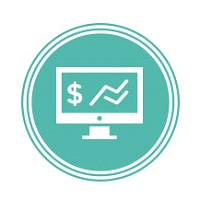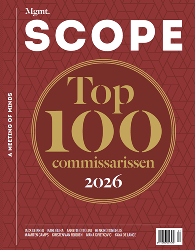More ICT at the bedside

Auteur: Stef Oud | 12-04-2018
In the healthcare sector, business models are increasingly subject to rapid displacement. Early this year, webstore Amazon announced that it would team up with Berkshire Hathaway (Warren Buffett’s investment vehicle) and the bank J.P. Morgan to form an independent healthcare company. This healthcare company is using technology to make healthcare cheaper and simpler. During the first stage the three partners will be focussing on their own employees (almost a million collectively), but they intend to offer these healthcare services to others as well in due course. Who would have considered this possibility only a few years ago?
This example is in keeping with a trend: as a result of the multitude of technological innovations and promising developments, new and often strong players enter the healthcare market. In addition, care institutions are on the verge of a number fundamental digital changes − take the rise of digital scanners for medical applications and of digital patient records.
To ensure that these changes are in fact improvements too, it is important that the healthcare sector is able to invent forms of collaboration that are fully consonant with digital developments and with the organizations marketing these innovations.
Prevention could still be better
Many new digital healthcare applications focus on the age-old saying ‘prevention is better than cure’. These applications are not only aimed at businesses but also geared towards individuals. This includes products such as apps to promote a person’s health and well-being, like running apps, which encourage a healthy lifestyle in an interactive way, or the skin monitor app, which allows you to take a picture of a suspicious spot on your skin and send it to your GP.
The next step is preparing an accurate and detailed health profile of individuals, cities, countries or specific social groups through social media such as Snapchat, Facebook, Linkedln and Instagram. This is a gold mine of information, which may be used in the public interest. However, there are hardly any overarching initiatives or parties who ‘own’ this subject.
This is unfortunate, because through seemingly simple digital applications, it is possible to conduct a data assessment process that may be extremely relevant in many healthcare areas. This information could be used for improvements in healthcare. At this juncture this is not yet done in a coordinated way − the question is therefore who will take up the gauntlet.
What is already good
Nowadays we can find a great deal of online information about medical issues. As a result of self-diagnoses, patients are empowered and better informed when they go to the general practitioner, where they exert greater pressure to ensure that they are referred to a specialist.
Within hospitals, too, healthcare processes are subject to radical changes. This includes the possibilities of improved electronic patient records and digitized diagnostic systems such as MRI, CT, X-ray and ultrasound. The sending of digital recordings has been greatly improved and makes it possible to carry out diagnoses at other or more locations in the world.
The exchange of real-time data and images offers radiologists and medical specialists better possibilities for coordinating their treatments with colleagues. Surgeons are supported during operations by robots, which can take over precision work and standard actions.
There are also numerous digital possibilities for supporting and improving aftercare and care between treatments. Patients would like to be discharged from hospital earlier, because they increasingly have access to remote patient monitoring: for example, people with heart failure or with a pacemaker receive measuring equipment, which allows the doctor to monitor their health outside of a clinical setting. Patients therefore have to go to hospital less often.
Focus
Digitization affects all conceivable processes within an organization. This is why it is crucial to have central management and coordination in relation to digital developments.
It make perfect sense, therefore, that many companies have appointed a Chief Digital Officer (CDO) for this purpose, or a department that is responsible for digital developments. In healthcare this is not yet very common, but there is every reason to tackle this issue. Digitization flourishes where there is seamless internal cooperation. The more rigidly the internal silos interact with each other, the more the digitization process is slowed down.
The possibilities of digital technology, such as artificial intelligence and Big Data, are endless, but the greatest risk this involves is that this will be at the expense of the focus on the customer − in this case the patient. With every new digital service or solution, the question must be: what good will it do to our patients? Precisely because there are so many digital solutions today, every organization in the healthcare chain will have to focus on specific goals. Whoever does not choose will end up ‘stuck in the middle’, as management guru Michael Porter put it.
Focusing in the digital domain means that things are manageable and makes it easier to withstand financially strong new players, like Amazon. Apart from going for a portfolio approach, collaborating in ecosystems with other healthcare organizations (‘strong together’) offers plenty of digital opportunities.
Quality versus costs
The biggest dilemma in healthcare is perhaps the classical balance between costs and the quality of care. Digitization can considerably improve the quality of care, but it is never free of charge. That is why every digital investment must ultimately be weighed against the patient’s interests: does this investment add value?
Last but not least, the human factor is decisive in the end. This applies to the builder of a healthcare app, to the surgeon who operates a patent with the assistance of a robot, but especially to any contact between the healthcare professional (general practitioner, nurse, surgeon, et cetera) and the patient. Medical assessment and personal contact remain at the heart of any healthcare process, but digitization can provide extra support and precision in this area.
Much is possible if data are used effectively and on a large scale for healthcare and the general interest. Unfortunately, there is still a lack of large-scale coordination and cooperation to effectively use and apply digitization.
It is time that the high tech and software industry, together with the healthcare sector, take up the challenge, in order to achieve a much more fundamental form of cooperation. That wish does entail a question of conscience. The objectives of the healthcare sector are at odds with the interests of commercial parties. If data are the new gold, how do we ensure that this gold benefits patients?
Text: Stef Oud, partner at A.T. Kearney and digital transformation leader.
Oud holds interviews and writes about new business models and organizations in transition for Management Scope. These contributions can be found under his profile.

